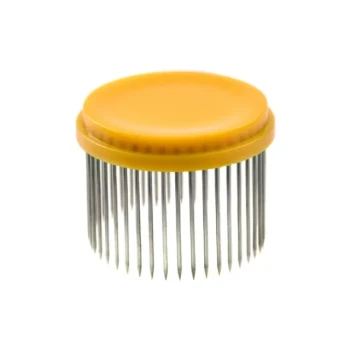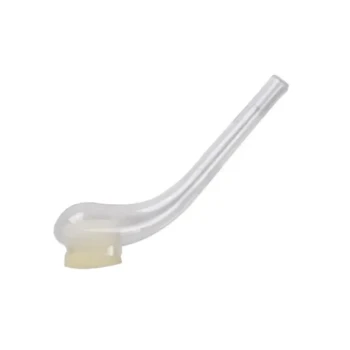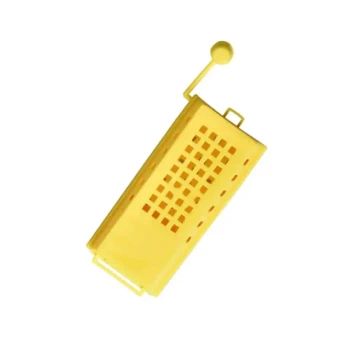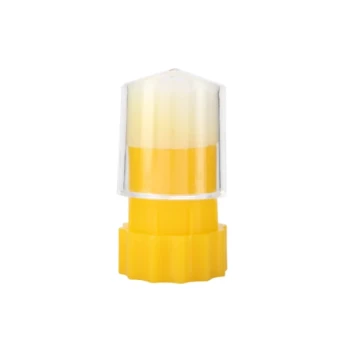Using a protected queen cell is a low-disturbance method to requeen a bad-tempered colony by leveraging the bees' natural supersedure instinct. You introduce the cell directly into the brood nest, typically by wedging the protector between the top bars of two frames. This allows the new virgin queen to emerge and potentially replace the old queen without the need to find and remove her first, significantly reducing hive inspection time and defensive behavior.
The core strategy is not simply replacing a queen, but triggering a controlled, natural supersedure. You are giving the colony a better option, allowing the bees to manage the transition themselves, which preserves the brood cycle and provides a built-in backup if the new queen fails.
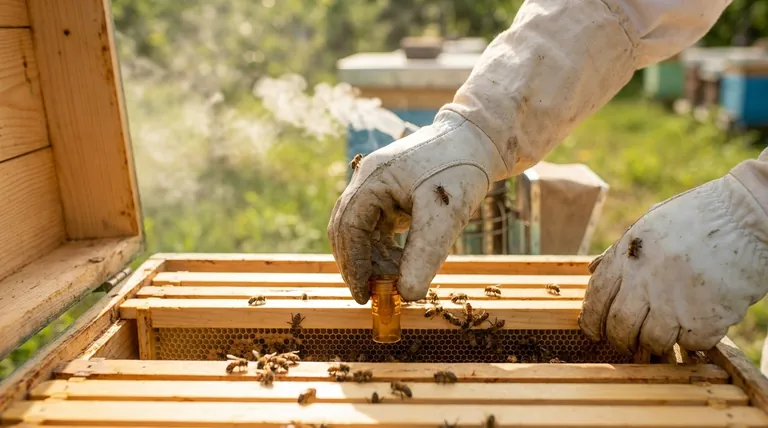
Why This Method Works for Aggressive Colonies
Requeening an aggressive, or "hot," hive is a challenge because extended inspections trigger a massive defensive response. The protected cell method is designed to be fast and work with the colony's biology, not against it.
Minimizing Disturbance and Defense
The primary advantage is speed. You do not need to spend 20 minutes searching for the old queen through a veil of angry bees.
The entire process of placing a cell can take less than 60 seconds. This minimizes the release of alarm pheromone and keeps the colony's defensive reaction to a minimum.
Leveraging Natural Supersedure
This technique is essentially an assisted supersedure. You are introducing a young, vigorous queen cell into a colony that has an existing, but perhaps failing or genetically inferior, queen.
The bees perceive the new cell as a potential successor. After the new queen emerges and successfully mates, the colony will often replace the old queen naturally, a process they are biologically programmed to do.
The Role of the Cell Protector
The foil or plastic protector is critical. It physically shields the delicate wax queen cell from being destroyed by worker bees.
Bees loyal to the old queen's pheromones may see the new cell as a threat and try to tear it down. The protector gives the virgin queen inside enough time to develop and emerge safely.
The Step-by-Step Introduction Process
Correctly placing the cell is vital for its acceptance and the survival of the virgin queen inside. The goal is to position it in the heart of the colony's nursery.
Locating the Brood Nest
Gently open the hive and identify the frames containing brood (eggs, larvae, and pupae). This area is the warmest part of the hive and is constantly attended by nurse bees.
You do not need to find the old queen for this method to work. The intention is for the colony to manage the replacement.
Correct Placement of the Cell
The ideal location is in the center of the brood nest. Gently separate two frames of brood.
Press the queen cell, protector and all, into the wax of the comb, typically in the upper-middle portion of the frame. Alternatively, as noted in the references, you can hang the cell protector from the top bar of a frame, letting the cell dangle in the space between frames.
Securing the Cell
Ensure the cell is secure and pointing downwards, its natural orientation. If hanging the cell, the foil tab can be folded over the top bar to prevent it from falling to the bottom of the hive. Once placed, gently push the frames back together and close the hive.
Understanding the Trade-offs and Risks
While effective, this method is not foolproof. It involves giving up a degree of control in exchange for speed and safety.
Risk of Non-Acceptance
The primary risk is failure. The colony may decide to reject the new cell, either by destroying it despite the protector or by killing the virgin queen after she emerges.
The old queen's pheromones may be too strong, or the colony may not perceive her as needing replacement. Success is not guaranteed.
No Brood Break for Mite Control
A major benefit of traditional requeening is the brood break—a period where no new eggs are laid. This gap effectively disrupts the reproductive cycle of Varroa mites.
This supersedure method is designed to avoid a brood break to maintain colony population. Consequently, you do not get the associated benefit of mite control and must manage Varroa levels through other means.
The Old Queen May Persist
The supersedure may not happen. You might check the hive a month later to find the old, bad-tempered queen is still the only one laying eggs. In this case, the attempt has failed, and you must try again.
Making the Right Choice for Your Goal
Deciding whether to use this method depends on your primary objective for the colony.
- If your primary focus is minimizing hive disruption and personal risk: This is an excellent choice, as it's the fastest and least invasive way to introduce new genetics.
- If your primary focus is a guaranteed genetic change: You must find and remove the old queen, wait 24 hours for the colony to realize it is queenless, and then introduce the cell.
- If your primary focus is integrated pest management: Acknowledge that this method forgoes the benefit of a brood break for Varroa control and plan your mite treatments accordingly.
By understanding this technique as an assisted supersedure, you can strategically requeen your most challenging colonies while minimizing disruption and risk.
Summary Table:
| Method Feature | Benefit for Bad-Tempered Colonies |
|---|---|
| Fast Introduction (<60 seconds) | Drastically reduces hive inspection time and defensive response. |
| No Need to Find Old Queen | Eliminates the risk of prolonged searches through angry bees. |
| Works with Supersedure Instinct | Allows the colony to manage the queen transition naturally. |
| Protector Shields Cell | Prevents worker bees from destroying the new queen cell before emergence. |
| Preserves Brood Cycle | Maintains colony population strength; forgoes a Varroa mite brood break. |
Ready to requeen your commercial apiaries safely and efficiently?
HONESTBEE supplies beekeepers and distributors with the high-quality, protected queen cells and equipment needed for successful low-disturbance requeening. Our wholesale-focused operations ensure you get the reliable supplies your business depends on.
Contact HONESTBEE today to discuss your beekeeping equipment needs and streamline your hive management.
Visual Guide
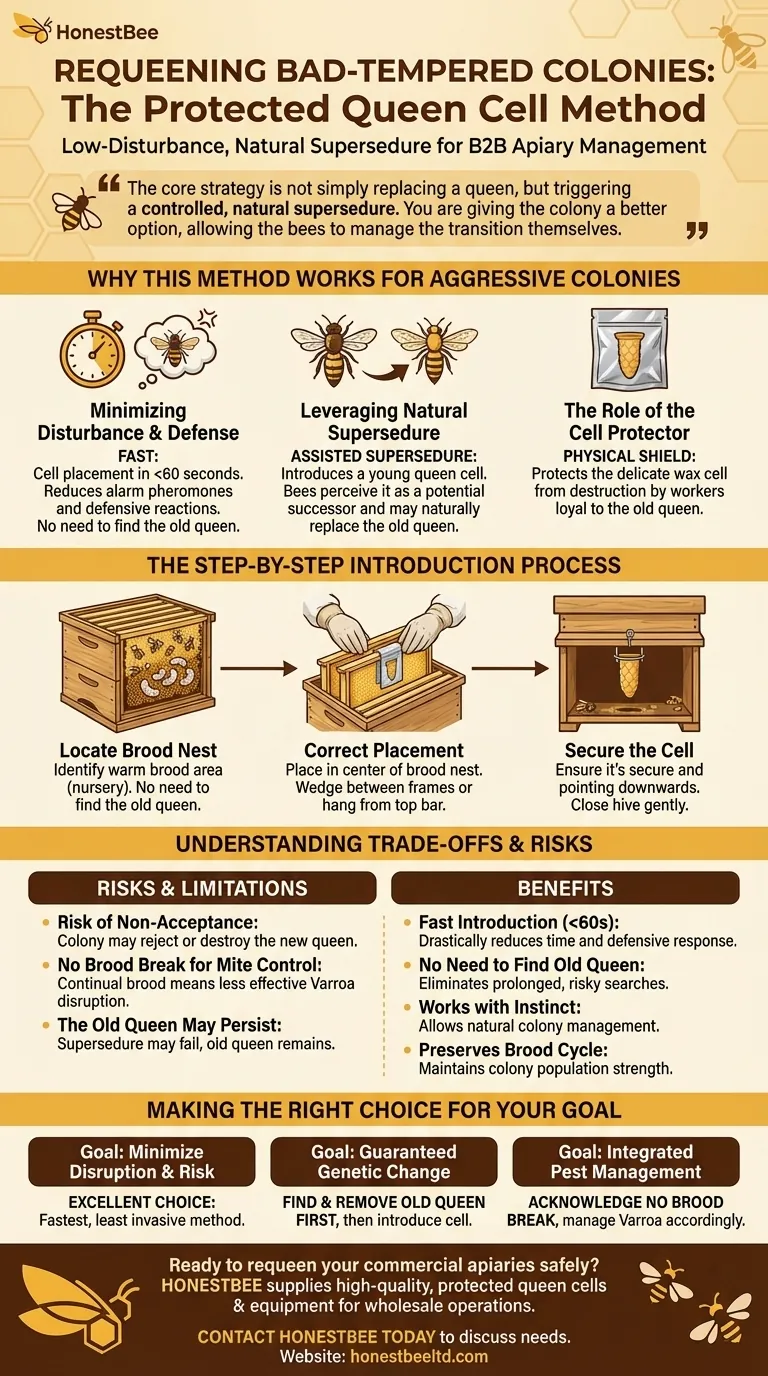
Related Products
- Brown Nicot Queen Cell Cups for Breeding Queen Bees Beekeeping
- JZBZ Type Wide Base Plastic Queen Cell Cups for Base Mounting and Queen Rearing
- JZBZ Push-In Queen Cell Cups for Beekeeping
- Clear Black Plain Polystyrene Queen Bee Grafting Cell Cups No Lug for Bee Queen Cup
- Professional Round Push-In Queen Cage with Metal Tines
People Also Ask
- What is the advantage of the Nicot Cupkit system? Secure Your Queen Rearing Success with Batch Protection
- How does Queen Rearing with JZBZ work? A Reliable System for Consistent Queen Production
- How many cells are given to a nucleus? Understand the One-to-One Rule in Cell Biology
- What are the ideal conditions for raising good queen cells? Achieve Robust Queens with Strong Cell-Builder Colonies
- How are the queen cells raised after removing the plugs? Master the Art of Queen Rearing




